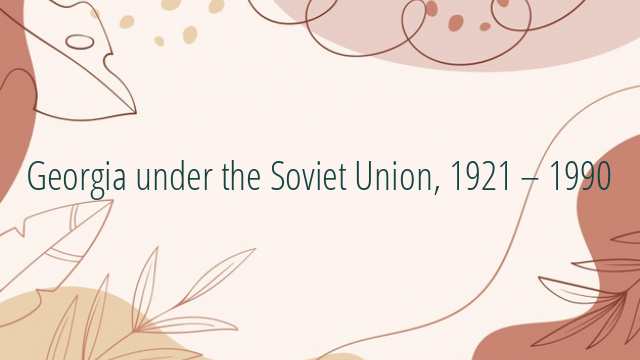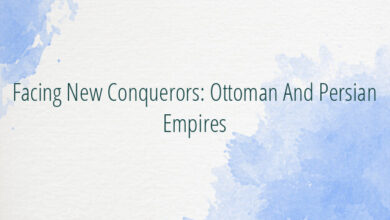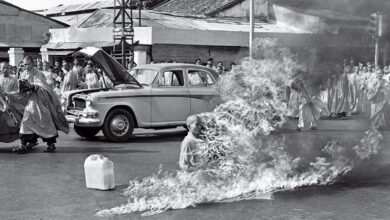
Georgia under the Soviet Union, 1921 – 1990
During the Georgian Affair of 1922, Georgia was forcibly incorporated into the Transcaucasian SFSR comprising Armenia, Azerbaijan, and Georgia. The Soviet Government forced Georgia to cede several areas to Turkey (the province of Tao-Klarjeti and part of Batumi province), Azerbaijan (the province of Hereti/Saingilo), Armenia (the Lore region) and Russia (part of the Black Sea seacost and a northeastern corner of Khevi, eastern Georgia). Soviet rule was harsh: about 50,000 people were executed and killed in 1921-1924, more than 150,000 were purged under Stalin and his secret police chief, the Georgian Lavrenty Beria in 1935-1938, 1942 and 1945-1951. In 1936, the TFSSR was dissolved and Georgia became the Georgian Soviet Socialist Republic.
Reaching the Caucasus oilfields was one of the main objectives of Hitler’s invasion of the USSR in August 1941, but the armies of the Axis powers did not get as far as Georgia. The country contributed almost 700,000 fighters (350,000 were killed) to the Red Army, and was a vital source of textiles and munitions. However, a number of Georgians fought on the side of the German armed forces, forming the Georgian Legion.
Stalin’s successful appeal for patriotic unity eclipsed Georgian nationalism during the war and diffused it in the years following. Khrushchev’s policy of de-Stalinization was followed by a general criticism of the whole Georgian people and culture. On March 9, 1956, hundreds of Georgian students were killed when they demonstrated against Khrushchev.
The decentralisation program introduced by Khrushchev in the mid-1950s was soon exploited by Georgian Communist Party officials to build their own regional power base. A thriving capitalist shadow economy emerged alongside the official state-owned economy, making Georgia one of the most economically successful Soviet republics but unfortunately also greatly increasing corruption.
Although corruption was hardly unknown in the Soviet Union, it became so widespread and blatant in Georgia that it came to be an embarrassment to the authorities in Moscow. The country’s interior minister between 1964 and 1972, Eduard Shevardnadze, gained a reputation as a fighter of corruption and engineered the removal of Vasil Mzhavanadze, the corrupt First Secretary of the Georgian Communist Party. Shevardnadze ascended to the post of First Secretary with the blessings of Moscow. He was an effective and able ruler of Georgia from 1972 to 1985, improving the official economy and dismissing hundreds of corrupt officials. Soviet power and Georgian nationalism clashed in 1978 when Moscow ordered revision of the constitutional status of the Georgian language as Georgia’s official state language. Bowing to pressure from mass street demonstrations on April 14, 1978 Moscow approved Shevardnadze’s reinstatement of the constitutional guarantee the same year. April 14 was established as a Day of the Georgian Language.
Shevardnadze’s appointment as Soviet Foreign Minister in 1985 caused him to be replaced as Georgian leader by Jumber Patiashvili, a conservative and generally ineffective Communist who coped poorly with the challenges of Perestroika. Towards the end of the late 1980s there were increasingly violent clashes between the Communist authorities, the resurgent Georgian nationalist movement and nationalist movements in Georgia’s minority-populated regions (notably South Ossetia). On 9 April 1989, Soviet troops were used to break up a peaceful demonstration at the government building in Tbilisi. Twenty Georgians were killed and hundreds wounded and poisoned. The event radicalised Georgian politics, prompting many – even some Georgian communists – to conclude that independence was preferable to continued Soviet rule.




